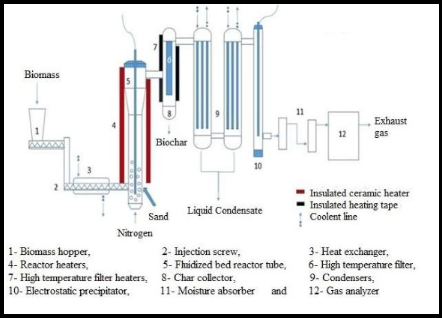Abstract
The influence of preparation method on the specific surface area, total pore volume, and pore size distribution of activated biochar derived from canola meal and Douglas fir was investigated for its use as cathode material for a lithium-sulfur (Li-S) battery. The specific surface area and total pore volume of fast pyrolysis derived activated biochars from Douglas fir and canola meal were found to be 3355 and 3227 m² g-¹, and 1.58 and 1.49 cm³ g-¹, respectively. Fast pyrolysis of canola meal activated biochar that was loaded with 66.2% sulfur exhibited high initial capacity of 1222 mAh g-¹ at low discharge rate (0.05 C) and high capacity retention of 589 mAh g-¹ after 100 cycles at high discharge rate (0.5 C) when used as the cathode for a Li-S battery. Our results indicated that activated biochar derived from fast pyrolysis showed better physical properties for use as Li-S cathode material as compared to activated biochar derived from slow pyrolysis.
About the Publication
Published by the American Society of Agricultural and Biological Engineers, St. Joseph, Michigan www.asabe.org
Citation
Transactions of the ASABE. 63(2): 485-493. (doi: 10.13031/trans. 13793) @2020
Authors
Sourov K. Sajib, Sushil Adhikari
Read the full article at ASABE:

